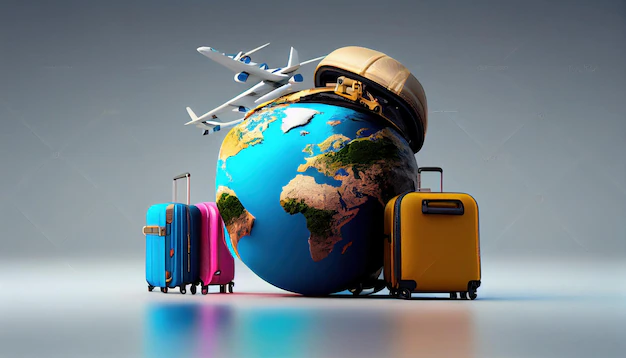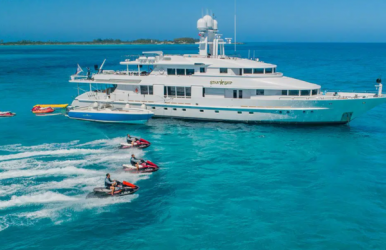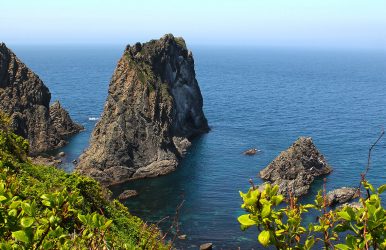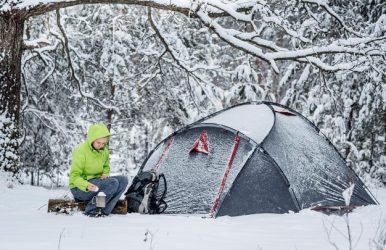How to Choose the Perfect Yacht for Your Charter
BY Sibashree Jan 16, 2025
Renting a perfect yacht for your charter is a thrilling opportunity to enjoy luxury, freedom, and adventure. Travel on the surface of the blue ocean is unlike anything you want to experience during the holidays. The different amenities available on the board give you an experience unlike anything else. You can charter an airplane for a fun and joyful ride. But there’s something else when it’s a yacht. However, selecting the ideal yacht can seem overwhelming, with so many options available. Whether you’re a seasoned sailor or a first-time renter, here’s a step-by-step guide to help you choose the perfect yacht for your trip. 1. Define Your Vacation Style Think about the type of experience you want. Are you looking for a romantic escape, a family-friendly adventure, or a lively party with friends? Your vacation style will guide you in selecting the right type of yacht. Sailing Yachts: Ideal for those who love the authentic experience of navigating with sails. Motor Yachts: Perfect for luxury, speed, and comfort. Catamarans: Spacious and stable, great for families or groups. Gulets: Traditional wooden vessels, perfect for laid-back cruising with a touch of charm. At 12 Knots Yacht Rentals, you’ll find a variety of yachts tailored to your preferences. Choosing the best yacht for your vacation depends on your cruising style and how you want to sail. The type of luxury experience you want depends on your desire and the experience you are looking for. You’ll choose the perfect yacht for your charter depending on that. So, first, set your expectations and the above parameters should help you identify what you are looking for in the yacht. 2. Consider Your Group Size How many people will join you? Yachts come in different sizes, from intimate vessels for two to spacious yachts that can accommodate large groups. Ensure there’s enough room for everyone to sleep, dine, and relax comfortably. There are different sizes of yachts, and each size has a capacity to accommodate a specific number of people. Get a small yacht, and you can have 4 to 12 people onboard. Now, if you want a grand and luxury wedding on a yacht, you’ll need from 100 to 300 people. That’s when you need a large yacht. Also the need for safety guides and features also change with the number of people you want to have onboard for the charter. 3. Choose the Right Destination The destination often influences the type of yacht you should choose. For example: In the Caribbean, a catamaran might be ideal for shallow waters and island hopping. For the Mediterranean, a motor yacht provides the speed and style needed to explore glamorous coastal towns. A luxury yacht in the Maldives ensures you travel comfortably across atolls. So, choosing the right destination for a yacht charter is also an integral part of finding what works for you. Think of the location you want to visit on your yacht and choose accordingly. Visit 12 Knots to explore available yachts by destination. 4. Decide on Crew vs. Bareboat Crewed Yachts: Perfect for a hands-off, luxurious experience. The crew handles everything from navigation to meals, leaving you free to relax. Bareboat Charters: Great for experienced sailors who want full control of the yacht. You’ll need the appropriate certifications to rent these. If you want the experience of charting a yacht, it’s great to go for a bareboat charter. If you are a skilled sailor and have significant experience handling a yacht in the ocean, nothing is stopping you from getting a bareboat charter. You must have the necessary certifications and licenses for charting bareboat yachts. So, keep your personal safety and legal procedures in mind when deciding between a crew or a bareboat charter. 5. Set a Budget Yacht rentals often have significant differences in pricing depending on the size, type, and location. Keep in mind additional costs, such as fuel, docking fees, and provisioning. Many charters offer transparent pricing, making it easier to stick to your budget. But, typically, in the budgeting part, the key areas of consideration come down to the charting fees and the APA (Advance Provisioning Allowance). The advance provisioning allowance for the additional expenses such as drinks, food, delivery, re-delivery fees, and the average cost for smaller yachts. Depending on your requirement for a luxury yacht charter, you’ll have to spend a specific amount. A small yacht chartering will cost you $10,000 per week. On the other hand, a large sized luxury yacht will cost $150,000 per week. So, set your budget depending on whatever type of experience you are looking for. 6. Check the Amenities Think about the facilities you’ll need: Spacious cabins and bathrooms Air conditioning Onboard kitchen or chef Wi-Fi and entertainment systems Equipment for water sports like snorkeling, paddle boarding, or jet skiing Explore yachts on 12 Knots to compare amenities and find your ideal match. 7. Understand the Season Different destinations have peak seasons. For example, the Mediterranean is best in summer, while the Caribbean shines in winter. Booking in advance ensures you get the yacht you want at the best price. 8. Read Reviews and Consult Experts Look for reviews from past renters and seek advice from yacht rental professionals. At 12 Knots, their experienced team is ready to help you make the best choice for your trip. Several listing websites online allow you to comparent types of yachts and luxury riding experiences. You can compare prices, features amenities on those websites before making a decision. In addition, different clients also leave their own reviews and testimonials about specific rentals. You can check those before making a decision. Conclusion Renting a yacht is a fantastic way to elevate your vacation, but the key to an unforgettable experience is choosing the right yacht. You can ensure a seamless and enjoyable trip by considering your vacation style, destination, group size, and budget. You can take the advice we have given in this article to make your selection a worthwhile one. On the other hand, if you are a travel enthusiast, read other articles we have on our website. Ready to start planning? Explore the best yachts for your dream destination at 12 Knots Yacht Rentals and embark on the adventure of a lifetime! Also read Why Include Whale Watching In Your LA Itinerary. Traveling On A Budget: Tips For Affordable Adventures. From Cocktails To Kickflips: Must-Try Activities In San Diego.












